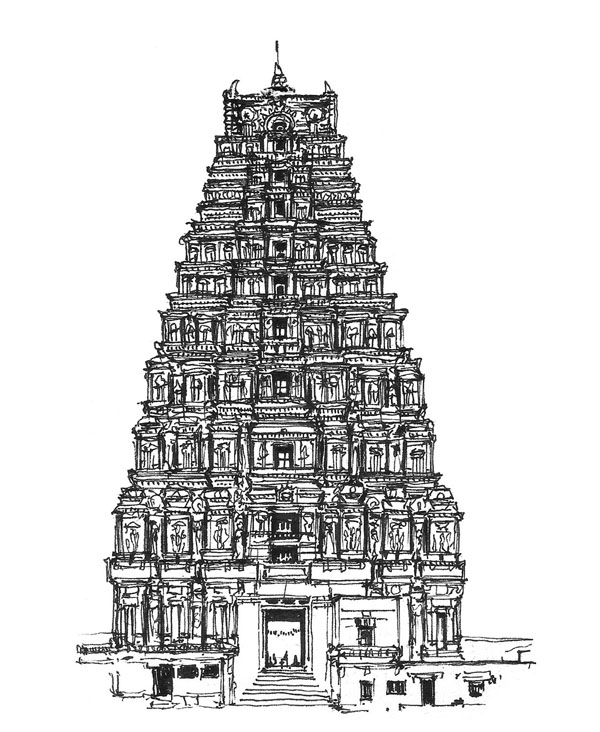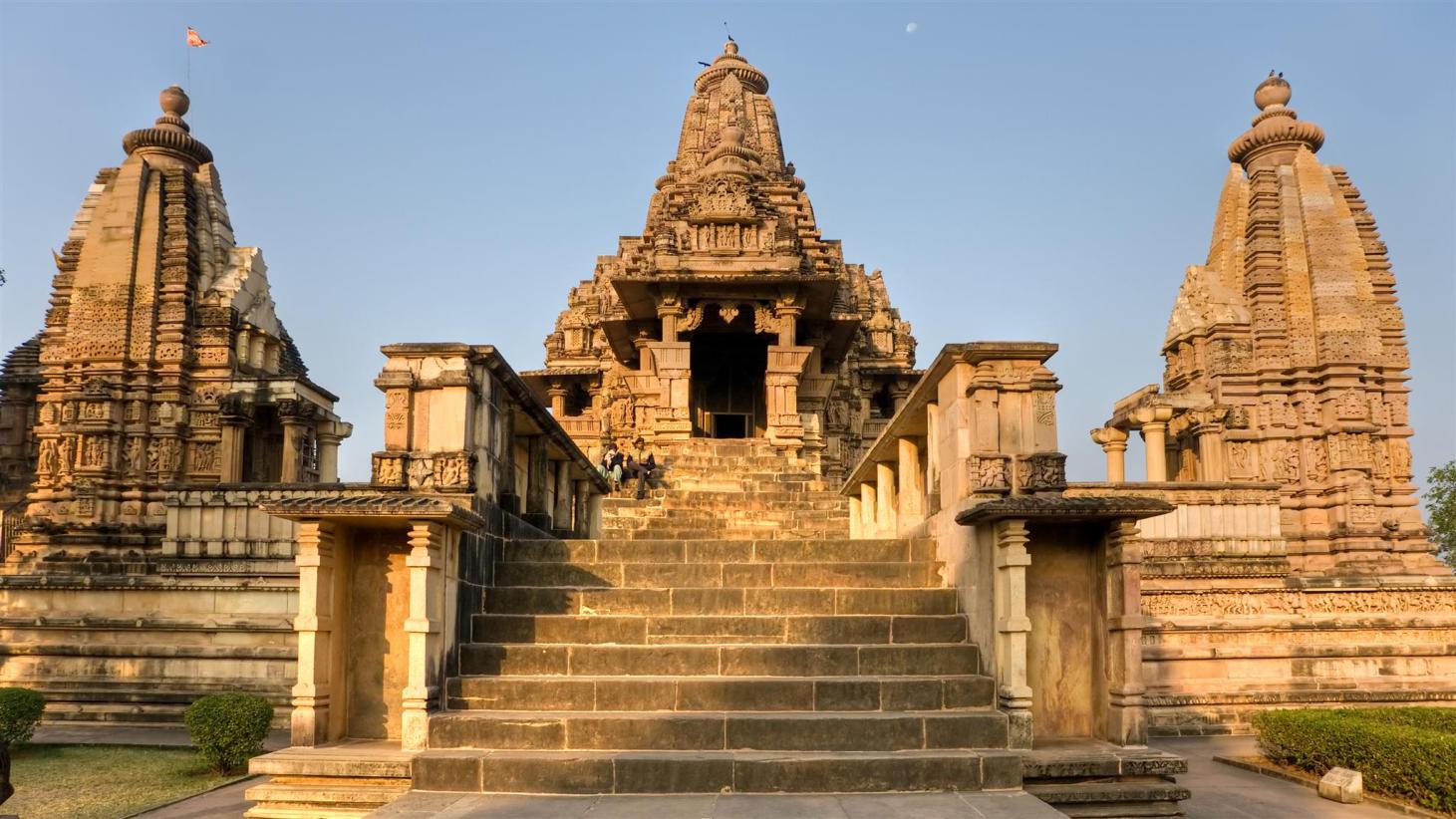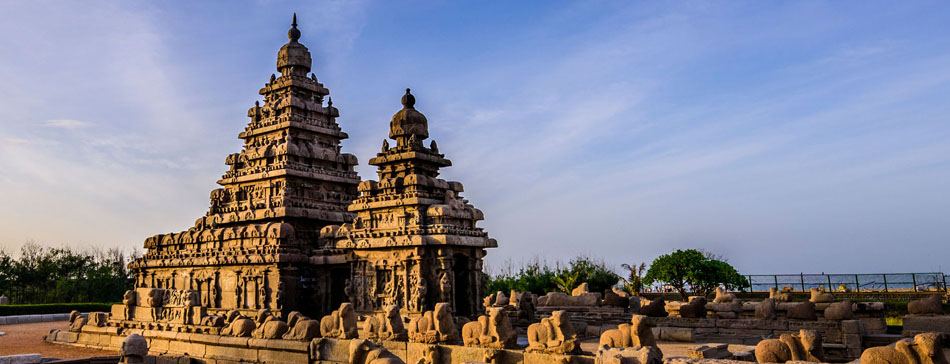Harihara Associates
Jawaharlal Nehru International Stadium
C1103, Kaloor, Cochin - 17

Temple construction in India started nearly 2000 years ago. The oldest temples that were built of brick and wood no longer exist. Stone later became the preferred material. Temples marked the transition of Hinduism from the Vedic religion of ritual sacrifices to a religion of Bhakti or love and devotion to a personal deity. Temple construction and mode of worship is governed by ancient Sanskrit scriptures called agamas, of which there are several, which deal with individual deities. There are substantial differences in architecture, customs, rituals and traditions in temples in different parts of India. South India is very different from the north. Hundreds, if not thousands, of ancient temples were destroyed during Islamic rule in India (especially in North India) between 1200 CE and 1700 CE. South India therefore has more large temples still standing.
During the ritual consecration of a temple, the presence of the universal all-encompassing Brahman, is invoked into the main stone deity of the temple, through ritual, thereby making the deity and the temple sacred and divine
Hindu temples are known by different names in different parts of the world, depending upon the language. The word mandir or mandira is used in many languages, including Hindi, and is derived from a Sanskrit word, mandira, for 'house' (of a deity by implication). Temples are known as kō-yil (and occasionally, especially in modern formal speech, aalayam) in Tamil. The etymology is from kō-yil, or lord, and aalayam home. Temples are known as Devasthana or Gudi in Kannada, as Gudi, Devalayam or Kovela in Telugu and Mondir in Bengali, as Kshetram or Ambalam in Malayalam

Many of the bigger grand ancient temples of north no longer exist. Many were destroyed by Muslim invaders. However some ancient beautiful temples still survive in remote places such as Kajuraho, Orissa, Rajasthan etc. Many new large temples have been built in the last 100 years. Most North Indian temples however, are simple small structures meant for the needs of the local people. During the difficult period of Islamic rule 12th to 17th centuries, the temples lost their zeal for elaborate and expensive rituals, and in most ordinary temples in North India ritual is very simple in stark contrast to South Indian temples which have elaborate ritual. Also North Indian temples often tend to be less orthodox and in many cases all and sundry are permitted to enter the innermost sanctum of the deity and worship the deity personally. In such cases, the deity will not be adorned with valuable jewellery. The innermost heart of the temple is the sanctum where the deity (usually of fixed stone) is present, followed by a large hall for lay worshippers to stand in and obtain "darshan" or divine audience. There may or may not be many more surrounding corridors, halls etc. However there will be space for devotees to go around the temple in clock wise fashion circumbulation as a mark of respect. In North Indian temples, the tallest towers are built over the sanctum sanctorum.

Many large bannabs (grand stone temples) still stand in South India. Ritual tends to be orthodox and elaborate especially in the large vedic brahmincal temples, which follow the pan-Indian Sanskrit agama scriptural traditions. Apart from the main fixed stone deities, processional deities made of panchaloha (an alloy of 5 metals - gold, silver, copper, zinc and tin) are bathed, dressed, decorated with valuables and are taken out in processions for various festivals throughout the year. The richer the temple, the more elaborate the festivals. However, many ancient temples in small villages with great architectural and historical heritage value languish for lack of funds for maintenance.